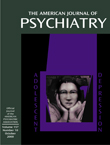Abstract
OBJECTIVE: This study determined the extent to which adding structured procedures improved diagnostic accuracy for outpatients with severe mental illness in a community mental health setting. METHOD: The Structured Clinical Interview for DSM-III-R (SCID) was used to interview 200 psychiatric outpatients. A research nurse reviewed medical records and amended the SCID diagnoses accordingly. A research psychiatrist or psychologist reviewed the diagnostic data and interviewed each patient to verify or further modify the previous findings. Diagnostic outcomes at each step of the procedure were compared to determine whether adding additional data improved diagnostic accuracy. The additional time required for each element of the diagnostic procedure was also assessed. RESULTS: Kappa comparisons of the different diagnostic levels showed that adding additional data significantly improved accuracy. Diagnoses rendered by combining the SCID and review of the medical record were the most accurate, followed by the SCID alone, and then diagnoses made by psychiatrists during routine care. In addition, the SCID alone identified five times as many current and past secondary diagnoses as were documented routinely in patients’ charts. CONCLUSIONS: Combining structured interviewing with a review of the medical record appears to produce more accurate primary diagnoses and to identify more secondary diagnoses than routine clinical methods. The patients’ knowledge of their diagnoses was limited, suggesting a need for patient education in this setting. Whether use of structured interviewing in routine practice improves patient outcomes deserves further study.



